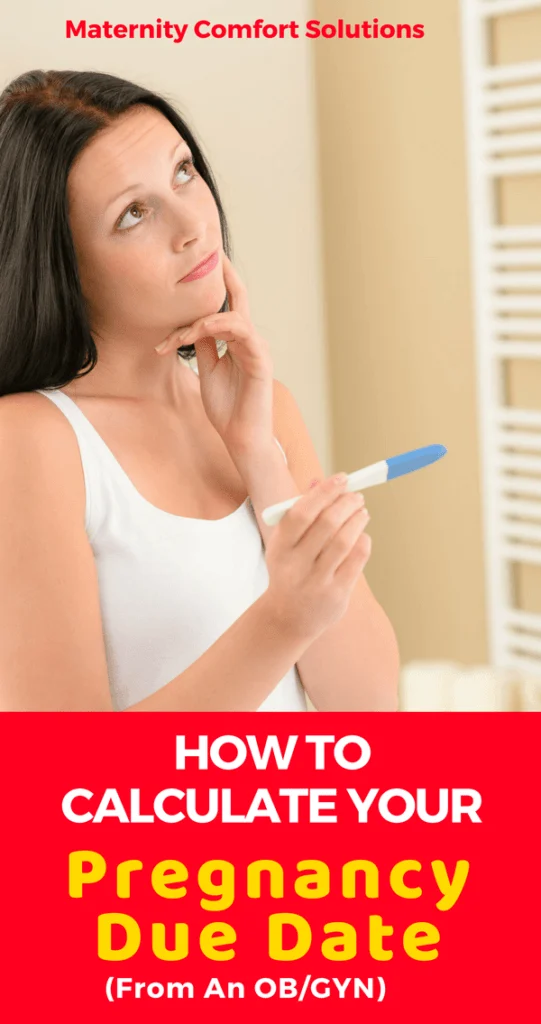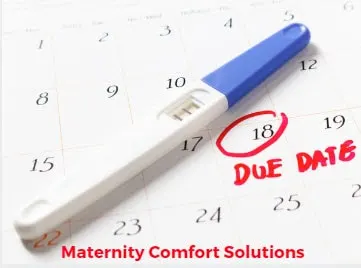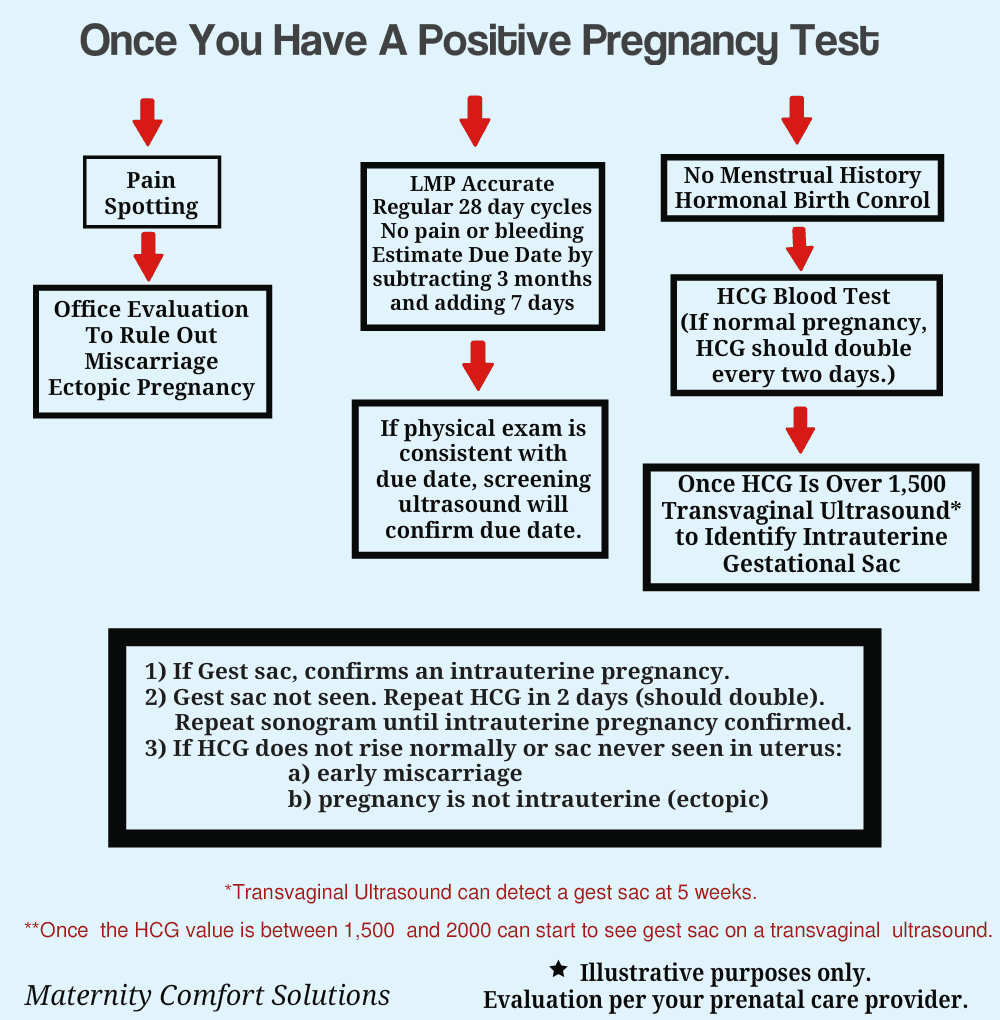

We may earn money or products from the companies mentioned in this post. You can read the full disclaimer below.


Updated August 3, 2022

Do you know how to calculate your due date? Establishing an accurate due date, also known as your estimated date of confinement or EDC, is extremely important.
If the first day of your last menstrual period is accurate, you can calculate your due date by subtracting three months and adding seven days to the first day of your last menstrual period.
You may need more testing to confirm an accurate due date if:
Table of Contents
Your provider will want to establish an accurate due date as early in your pregnancy as possible. Your estimated date of confinement* will impact the timing and accuracy of many medical tests. It will also affect many medical decisions throughout your pregnancy.
* Estimated date of confinement is the clinical term used to define your due date. It is often referred to as your EDC.

The following is a list of tests and medical decisions that can be affected based on your EDC:
To calculate your estimated date of confinement (EDC), you will be asked detailed information about your menstrual cycle.
If the decision is made to use your due date based on your LMP, your provider will want to know the first day of your last menstrual period and will want to know that you are certain about this date.
The “menstrual date” will permanently be entered into your prenatal record and will not be changed.
Example: If you are 10 weeks pregnant based on your LMP and your exam at your first prenatal visit indicates you are 16 weeks, an ultrasound will be performed to determine your due date. This is because there is too large a discrepancy between your due date based on your menstrual cycle compared to your clinical exam.
This determines when you ovulated if you have a regular, 28-day menstrual cycle. During ovulation, the egg is released from the ovarian follicle.
You want to be sure because this date will be used to calculate your due date.
This helps to determine if your menstrual cycle is reliable for calculating your due date.
Again, this can help determine the accuracy of your LMP.
This helps to determine how reliable your period is for determining your due date. If you have very consistent 28 day periods that you have regular midcycle ovulation.
Menses can be irregular when they start (menarche) and when they end (menopause). This information can also help to determine how accurate your last menstrual period is.
If accurate, it is the best indicator of when you first documented you were pregnant.
Fertilization can happen for a few days after intercourse.
Infertility is often associated with irregular periods, delayed ovulation, and anovulation (not ovulating). If you conceived without infertility treatment, this information can be helpful.
An ultrasound performed under 12 weeks of pregnancy will give the most accurate information to calculate your due date. This is because the ultrasonographer can see changes over a short period of time.
In contrast, an ultrasound done during the third trimester of pregnancy is very inaccurate because the fetus is fully developed and changes in imaging are very subtle.
The reason first-trimester ultrasound so accurate to calculate your due date is because distinct ultrasound findings occur every few days.
These findings can be accurate to within 5 days, depending on:
The specific findings on a 1st-trimester ultrasound are listed below. They offer information about dating and fetal well-being:
The gestational sac can be seen as early as the 4th week of pregnancy. However, it is not uncommon to become visible between the 5th and 6th week.
This is the earliest finding to confirm that the pregnancy is developing in the uterus. Often times this ultrasound finding is compared to a blood test called an HCG (Human Chorionic Gonadotropin).
It has been determined that when this blood test is above 2500 an intrauterine sac should be visible.
If not there may be no problem because the laboratory measurement can vary and if one has twins the levels of HCG will be higher.
The most important reason your provider will want to confirm an intrauterine pregnancy once your HCG reaches 2500 is to exclude the possibility of having an extrauterine pregnancy.
This is a pregnancy that is developing but is not implanted in the uterine cavity. Pregnancies that implant outside the uterine cavity are called ectopic pregnancies. Most often ectopic pregnancies are located in the fallopian tube.
It is very important to diagnose an ectopic pregnancy as soon as possible so treatment can be initiated before the pregnancy enlarges and ruptures out of the tube.
This can lead to significant blood loss and even death if not diagnosed and managed properly.
Ultrasound detection of a fetal heartbeat can be detected as early as 5 1/2 weeks. However, it is not uncommon to not see a heartbeat before 6 or even 7 weeks.
The reasons for this are many including some that have been mentioned.
This finding of a yolk sac confirms the presence of a developing embryo within the gestational sac. The yolk sac supplies nutrition to the developing embryo until nutrition is supplied by the placenta.
Visualization of a fetal pole with a heartbeat confirms the development of a viable developing embryo.
A yolk sac and fetal pole can start to be seen with a transvaginal ultrasound around 5 1/2 to 6 1/2 weeks.
When your pregnancy advances to 7 to 12 weeks, ultrasound dating is no longer based on the gestational sac, fetal pole or yolk sac. At this stage during your pregnancy, the crown-rump length is the ultrasound measurement used to calculate your due date.
If you have a second-trimester ultrasound, it will be less accurate than a first-trimester ultrasound.
This is because second-trimester ultrasound changes from one week to the next are very subtle compared to the dramatic changes that occur in the first trimester.
During the second trimester, an ultrasound performed to establish a due date measures the fetal head diameter (Biparietal Diameter) and other fetal growth characteristics. The accuracy of these fetal growth parameters is only accurate to within 11 days.
* The accuracy of an ultrasound study also depends on the experience of the sonographer and the quality of the equipment.
For the same reasons noted above a third-trimester ultrasound is less accurate and can have a margin of error of up to three weeks. Changes in fetal development from one week to the next are very subtle in the third trimester. This is the reason the due date will not be accurate.
This being said, a third-trimester ultrasound will be the only dating option available if you have your first prenatal appointment in the third trimester and your due date is not consistent with your last menstrual period.
If you have a regular 28-day menstrual cycle, there is a simple formula to get a quick idea of when your due date will be. Make sure you confirm your due date with your health care provider.
Subtract 3 months from the 1st day of your last menstrual period and add 7 days. ( Source )
*This formula assumes you have ovulatory, regular 28-day cycles.
Information used to calculate your estimated date of confinement (EDC):

Other articles you may find helpful:
How do you calculate your due date?
Assuming your last menstrual period is accurate, there are two simple formulas using the first day of your last menstrual period:
How can you determine when you conceived based on your due date?
If your menstrual cycle is 28 days and your due date was calculated by your provider based on your last menstrual period, conception occurred around day 14 of your last menstrual period.
Dr. Doug Penta, MD - Co-Founder of Maternity Comfort Solutions Dr. Doug Penta, is a seasoned Obstetrician and Gynecologist with over 38 years of practice, co-founded Maternity Comfort Solutions to provide evidence-based pregnancy and parenting information. A Boston University alum and former Clinical Professor at Harvard, his articles on Maternity Comfort Solutions offer expectant mothers invaluable nutritional insights. View all posts
Sue Winters, RN - Co-Founder of Maternity Comfort Solutions Sue combines 20 years of nursing with a rich background in early childhood education. Co-founder of Maternity Comfort Solutions, her articles provide creative toddler activities and practical tips on pregnancy nutrition and baby shower planning, embodying her commitment to supporting families through early parenthood. View all posts
Posted on Last updated: August 3, 2022